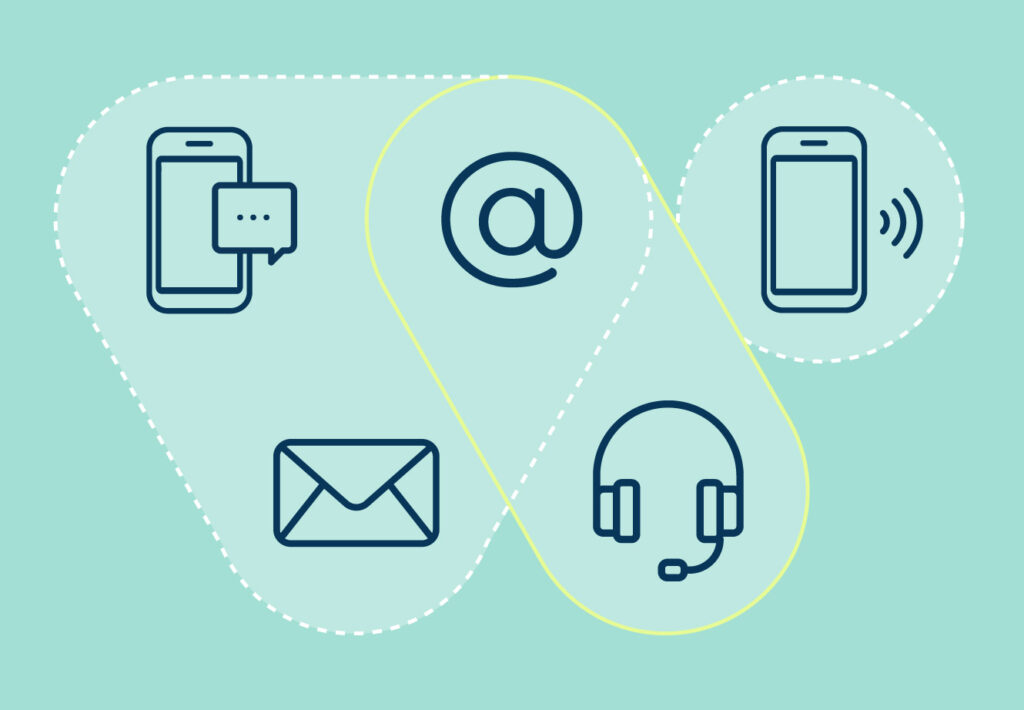In today’s healthcare landscape, personalized communication has become essential. Healthcare consumers demand an Amazon-like experience where they receive unique messages through the right channel, at the right time. This shift requires health plans and providers to step up, adapt, and start understanding communication trends and embrace new technologies to make it happen.
Something else to consider as you embark on a personalized communication journey is that not all communication channels are created equal—some are more effective than others depending on your audience. It’s your job to know the preferences of your members and patients and meet them where they are.
This ‘right channel’ philosophy proves to be challenging because you can’t just lump everyone into one category. That’s not an effective health engagement strategy and it certainly won’t move people to action. The way an 85 year old communicates is very different from the way a 28 year old prefers to communicate, and that needs to be taking into account when building a successful health engagement plan.
As always, there are outliers within every generation that have different preferences. It’s now up to healthcare organizations to know not only the right message and time to communicate, but also which channel will be the most effective in moving people to take specific health actions. It’s a big ask, but with the right tools and data, we know healthcare can step up to the challenge.
Communication, Diversified
To get people to take specific health actions, you first need to capture their attention. This is where health engagement comes in—it’s the critical first step in your overall health action strategy. One of the biggest challenges is that there are so many communication channels available now, it’s hard to know where to begin. Let’s break it down.
- Text Messaging
- Interactive Voice
- Direct Mail
- Live Agent

Here’s Icario’s guide for healthcare leaders to navigate health engagement across generations.
The Silent Generation
The Silent Generation is a group of adults born in 1945 or earlier. On the young end, members of this generation are in their early 70s and many in this group are adopting modern technologies to keep up with the changing communication preferences of their grandchildren. You’ll find that most in the Silent Generation have a cell phone. This doesn’t mean that they’ll have the latest smartphone, but it is likely that they’ll own a flip phone at the very least. This is an important factor to keep in mind when communicating with the Silent crowd because although they may have a cell phone, it may not have the capability to interact with links within text messages.
If your goal is to drive members and patients to a website, texting the Silent Generation is a risk because they might not be able to interact with the communication effectively (or at all).Older members of the Silent Generation still respond well to direct mail and are still likely to answer phone calls from unknown numbers and will interact with interactive voice calls.
Key Takeaway: Give the silent generation a call. They’re likely to answer, engage, and take action.
Baby Boomers
Baby Boomers historically have given younger generations a hard time because they are glued to their cell phones. While this may have been true 5 years ago, a major shift has taken place and more Boomers are spending time on their smartphones reading the news, emailing, shopping, and texting. In fact, text messaging has quickly becoming their preferred communication channel.
AARP reports that 70% of adults over the age of 50 have a smartphone. Not only that, but 9 in 10 of those adults say that they use their smartphone to send and read text messages.
We can no longer assume that older generations aren’t embracing the latest forms of communication and technology. While Boomers still appreciate a quality face-to-face interaction and have a more traditional mindset when it comes to communication, they are still willing to adapt. The point is that many Baby Boomers do text, they respond well to inbound text messages, and they trust healthcare organizations to do it right.
Key Takeaway: Try a mix of texting, email, and interactive voice calls with Boomers. You may not get instant engagement, but with the right mix of messages and channels, you’ll strike the right balance and hit the Boomer communication sweet spot.
Generation Jones
Generation Jones is an interesting sub-generation within the Baby Boomer generation. The age range of Generation Jones varies depending on the source, but it’s roughly those born between the mid to late 1950s to 1964. The name comes from the “keeping up with the Joneses” mentality, which points to a desire to have the latest and greatest—from the newest SUV to the hottest technology.
While Generation Jones identifies with many of the key values that Boomers, they are a step ahead in their use of technology. They embrace email and texting more than older Boomers and will often have the latest version of the newest tech.
Key Takeaway: Text messaging and email are the likely channels to successfully engage with Generation Jones. While some may still appreciate interactive voice calls and even direct mail, the majority will take action when they have a link to click.
Generation X
Generation X is the no-nonsense generation. They grew up with personal computers and are comfortable with the latest technology. They are far less formal than generations proceeding them and they value directness and getting down to business. This is key because it can inform the type of messages you are sending to Gen X’ers. This is a generation that is likely to do research based on the messages they receive, so keep messages short and simple, but also provide additional resources because that will build trust and loyalty with this group because they don’t have to seek anything out.
Key Takeaway: Gen X’ers rely heavily on email. They like to have all of the information they need in order to make the most informed decision, so providing additional resources is key—whether that be an attachment to an email or a link in a text message to help drive them to take action, it’s much more likely to happen if they can steer themselves with just a hint of guidance.
Millennials
Millennials grew up with the internet and 24/7 communication. They think and act differently than other generations—they take naturally to multi-tasking and value transparency and storytelling. Millennials have a blurred line between work and personal life and are nearly always connected to various social channels. Calling a Millennial can be met with mixed results—if they have your number and they know you, they might answer, but they are much more likely to respond quickly through text messaging. Millennials are more interested in a brand’s story than other generations and take brand values into account when making buying decisions.
Key Takeaway: Digital natives by birth, Millennials are best reached through digital channels like social media or text messaging. From a messaging perspective, they respond best to a storytelling approach that feels human, rather than canned content or marketing jargon.
Gen Z
As of right now, the jury is still out on the communication preferences and styles of Gen Z. Having been born after 1997, they haven’t entered the professional workforce yet and they likely aren’t yet responsible for their own healthcare decisions. It can be assumed, however, that their communication style will be similar to Millennials as they’ve grown up in the age of digital and can understand and adapt to new channels quickly and with ease.
While it’s easy to drop people into categories simply based on their generation’s primary preferences, it’s important to remember that no two people are the same—even within the same generation. Although one specific communication channel may typically work best for Millennials, for example, don’t rely on the one-size-fits all approach. Personalization is king and treating people like unique individuals will win every time.




